Related Research Articles
Diogenes Laërtius was a biographer of the Greek philosophers. Nothing is definitively known about his life, but his surviving Lives and Opinions of Eminent Philosophers is a principal source for the history of ancient Greek philosophy. His reputation is controversial among scholars because he often repeats information from his sources without critically evaluating it. He also frequently focuses on trivial or insignificant details of his subjects' lives while ignoring important details of their philosophical teachings and he sometimes fails to distinguish between earlier and later teachings of specific philosophical schools. However, unlike many other ancient secondary sources, Diogenes Laërtius generally reports philosophical teachings without attempting to reinterpret or expand on them, which means his accounts are often closer to the primary sources. Due to the loss of so many of the primary sources on which Diogenes relied, his work has become the foremost surviving source on the history of Greek philosophy.
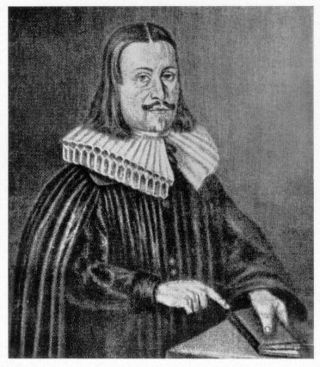
Andreas Libavius or Andrew Libavius was born in Halle, Germany c. 1550 and died in July 1616. Libavius was a renaissance man who spent time as a professor at the University of Jena teaching history and poetry. After which he became a physician at the Gymnasium in Rothenburg and later founded the Gymnasium at Coburg. Libavius was most known for practicing alchemy and writing a book called Alchemia, one of the first chemistry textbooks ever written.
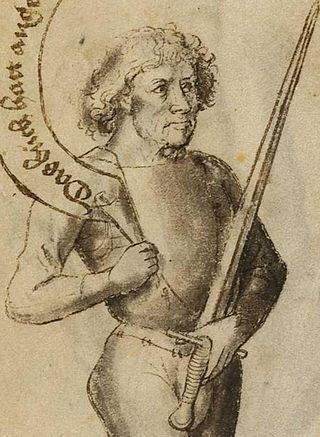
Hans Talhoffer was a German fencing master. His martial lineage is unknown, but his writings make it clear that he had some connection to the tradition of Johannes Liechtenauer, the grand master of a well-known Medieval German school of fencing. Talhoffer was a well-educated man who took interest in astrology, mathematics, onomastics, and the auctoritas and the ratio. He authored at least five fencing manuals during the course of his career, and appears to have made his living teaching, including training people for trial by combat.

Johannes Liechtenauer was a German fencing master who had a great level of influence on the German fencing tradition in the 14th century.

Codex 3227a of the Germanisches Nationalmuseum in Nuremberg is a manuscript of 169 folia, dated to the close of the 14th century. Its text is written in Latin and German. The German portions have been identified as in East Central German dialect.
Martial arts manuals are instructions, with or without illustrations, specifically designed to be learnt from a book. Many books detailing specific techniques of martial arts are often erroneously called manuals but were written as treatises.

The Book of Abramelin tells the story of an Egyptian mage named Abraham, or Abra-Melin, who taught a system of magic to Abraham of Worms, a Jew in Worms, Germany, presumed to have lived from c. 1362–c. 1458. The system of magic from this book regained popularity in the 19th and 20th centuries partly due to Samuel Liddell MacGregor Mathers' translation, The Book of the Sacred Magic of Abramelin the Mage.

The Aurora consurgens is an alchemical treatise of the 15th century famous for the rich illuminations that accompany it in some manuscripts. While in the last century, the text has been more commonly referred to as "Pseudo-Aquinas", there are as well arguments in favour of Thomas Aquinas, to whom it has originally been attributed in some manuscripts. The translated title from Latin into English is "Rising dawn."

Wolfdietrich is the eponymous protagonist of the Middle High German heroic epic Wolfdietrich. First written down in strophic form in around 1230 by an anonymous author, it survives in four main versions, widely differing in scope and content, and largely independent of each other.

The Kaiserchronik is a 12th-century chronicle written in 17,283 lines of Middle High German verse. It runs from Julius Caesar to Conrad III, and seeks to give a complete account of the history of Roman and German emperors and kings, based on a historiographical view of the continuity of the Roman and German successions. The overall pattern is of a progression from pagan to Christian worlds, and theological disputations stand at the turning-points of the Christianization of the Empire. However, much of the material is legendary and fantastic, suggesting that large sections are compiled from earlier works, mostly shorter biographies and saints' lives.

Heinrich Khunrath, or Dr. Henricus Khunrath as he was also called, was a German physician, hermetic philosopher, and alchemist. Frances Yates considered him to be a link between the philosophy of John Dee and Rosicrucianism. His name, in the spelling "Henricus Künraht" was used as a pseudonym for the 1670 publisher of the Tractatus Theologico-Politicus of Baruch Spinoza.

Der Rosengarten zu Worms, sometimes called Der große Rosengarten to differentiate it from Der kleine Rosengarten (Laurin), and often simply called the Rosengarten, is an anonymous thirteenth-century Middle High German heroic poem in the cycle of Dietrich von Bern. The Rosengarten may have been written as early as before 1250, but is securely attested by around 1300. It is unclear where it was written.

Pseudo-Apuleius is the name given in modern scholarship to the author of a 4th-century herbal known as Pseudo-Apuleius Herbarius or Herbarium Apuleii Platonici. The author of the text apparently wished readers to think that it was by Apuleius of Madaura (124–170 CE), the Roman poet and philosopher, but modern scholars do not believe this attribution. Little or nothing else is known of Pseudo-Apuleius apart from this.
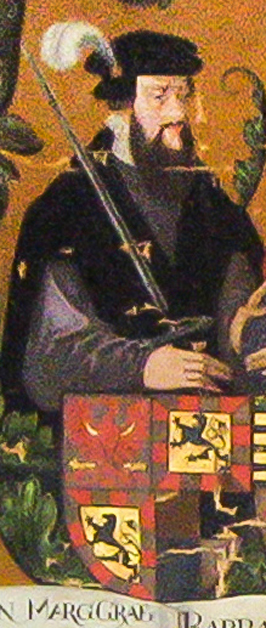
John, nicknamed the Alchemist was a Margrave of Brandenburg-Kulmbach and served as the peace-loving Margrave of Brandenburg after the abdication of his father, Frederick I, the first member of the House of Hohenzollern to rule Brandenburg.
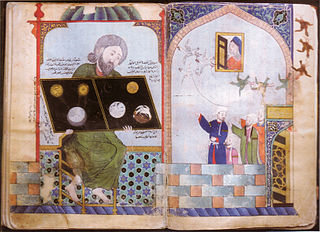
Muḥammad ibn Umayl al-Tamīmī, known in Latin as Senior Zadith, was an early Muslim alchemist who lived from c. 900 to c. 960 AD.

The Rosary of the Philosophers is a 16th-century alchemical treatise. It was published in 1550 as part II of De Alchimia Opuscula complura veterum philosophorum (Frankfurt). The term rosary in the title is unrelated to the Catholic prayer beads; it refers to a "rose garden", metaphoric of an anthology or collection of wise sayings.
The following outline is provided as an overview of and topical guide to alchemy:
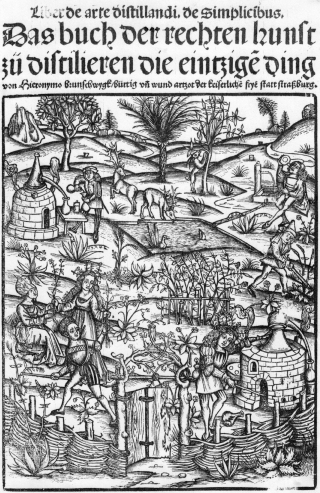
Hieronymus Brunschwig or Hieronymus Brunschwygk was a German surgeon ("Wundarzt"), alchemist and botanist. He was notable for his methods of treatment of gunshot wounds and for his early work on distillation techniques. His most influential book was the Liber de arte distillandi de simplicibus.
Solomon or Salomon Trismosin was a legendary Renaissance alchemist, claimed possessor of the philosopher's stone and teacher of Paracelsus. He is best known as the author of the alchemical works Splendor Solis and Aureum Vellus.
References
- ↑ Annina Sczesny (uni-wuerzburg.de) Archived June 7, 2011, at the Wayback Machine
- Herwig Buntz, 'Das "Buch der Heiligen Dreifaltigkeit"', Zeitschrift für Deutsches Altertum und Literatur 101 (1972), 150-160.
- Wilhelm Ganzenmüller, 'Das "Buch der Heiligen Dreifaltigkeit"', in Beiträge zur Geschichte der Technologie und der Alchemie (1956), 231-272.
- Uwe Junker, Das "Buch der Heiligen Dreifaltigkeit" in seiner zweiten, alchemistischen Fassung (Kadolzburg 1433), Cologne (1986), ISBN 978-3-925341-39-7.